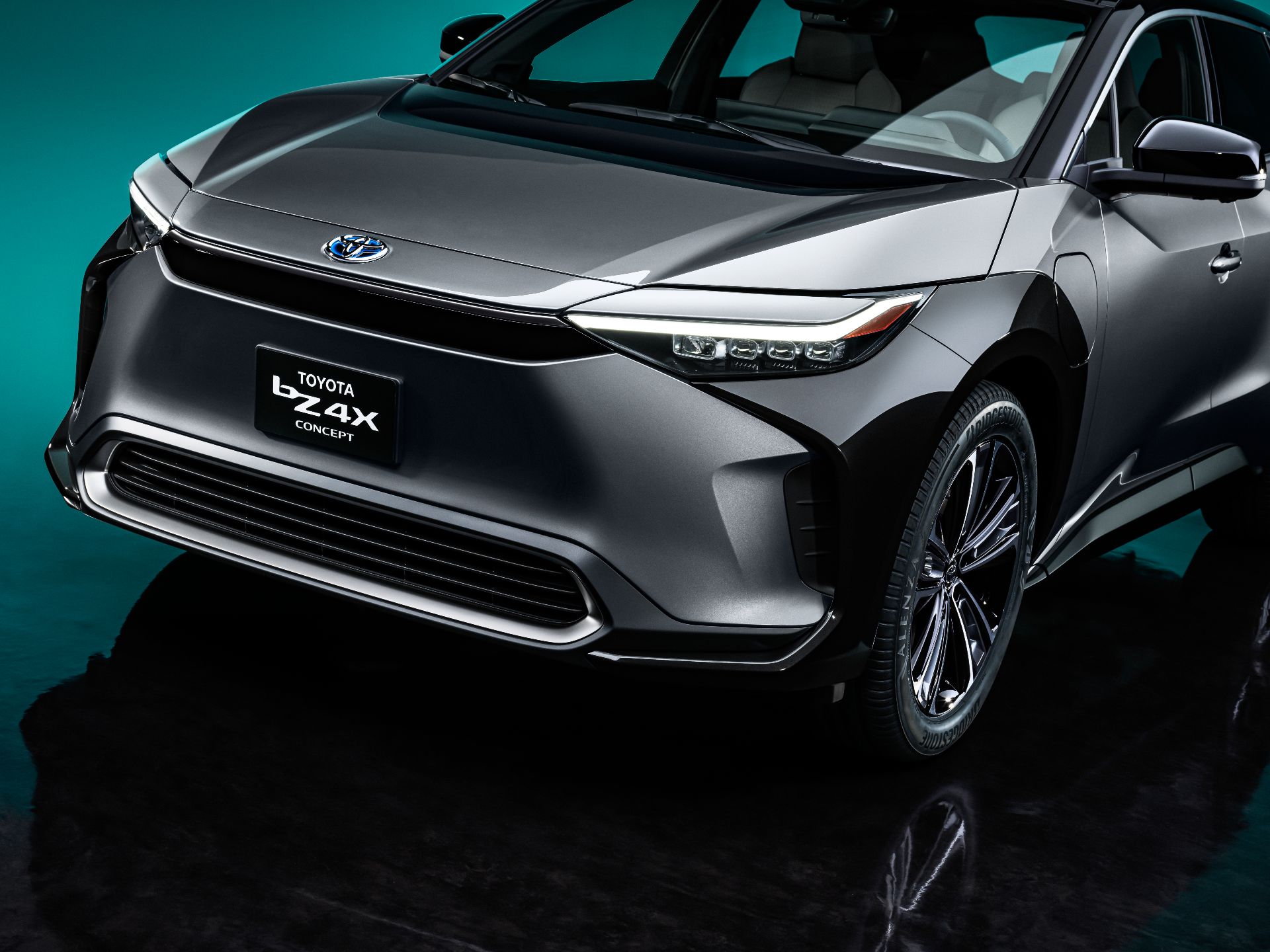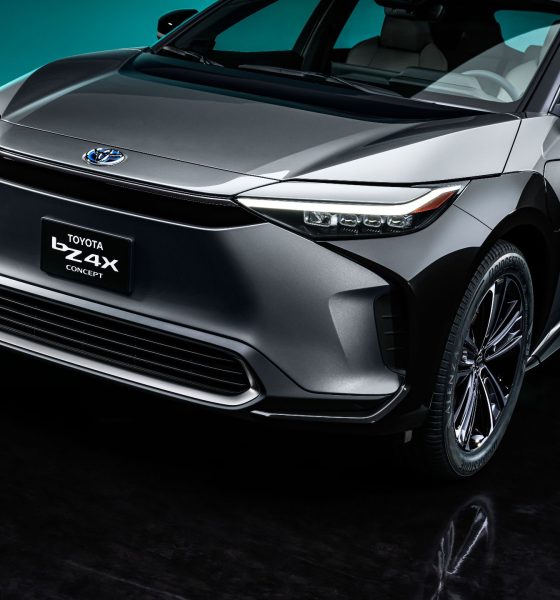Toyota Chief Scientist and Toyota Research CEO Gill Pratt recently shared his thoughts about the climate crisis, as well as the need to reduce carbon emissions in the transportation sector. The executive is quite knowledgeable about sustainable vehicles, as evidenced by the three cars he currently owns: a Toyota Sienna Hybrid, a RAV4 Prime Plug-In Hybrid (PHEV), and an all-electric Tesla Model X.
In a post on Medium, Pratt urged readers to follow the science and acknowledge that a diversified approach to battling climate change is more preferable than a transition to pure electric cars like his Model X. The executive cited the cost of battery production, the need for natural resources, and the emissions of battery manufacturing as reasons for his stance. He also noted that while he loves his 300-mile Model X, his vehicle’s large battery is pretty much wasted on an everyday basis since its range is usually not utilized fully.
“I love my Tesla Model X BEV. But commuting 30 miles in it every day — the average US commute — and recharging it every night is wasteful of the carbon reducing potential of most of its over 300 mile range battery. Sometimes we take the Tesla on long trips. But most of the time, 90% of its battery cells aren’t doing any good, and would reduce carbon much more if they were harder at work in other types of electrified vehicles, including HEVs or PHEVs,” the Toyota Research CEO wrote.
With this in mind, Pratt argued that it would be more efficient if batteries are distributed to more “right-sized” electrified vehicles instead, including hybrids and PHEVs. The cells that could go on one Tesla, for example, could instead be used for several electrified cars. “We hardly ever put gas into our RAV4 Prime PHEV, which has a battery ⅙ as large as our Model X BEV. For the same investment in batteries as our single Model X, five other RAV4 Prime customers could reduce their carbon footprint too,” Pratt explained.
The Toyota executive did note that he is a proponent for increased battery production, the lowering of the carbon footprint of electric power plants, and the expansion of rapid charging stations. However, Patt also argued that in many countries, a lot of the easier carbon reduction of electric power plants had already been achieved by converting them to natural gas, effectively lowering their carbon output by half. Replacing the plants with new nuclear, wind, and solar facilities would be more difficult and more costly, added the Toyota Research CEO.
Ultimately, Pratt noted that he and Toyota believe that the transition to pure electric vehicles, such as those planned in Europe and areas like China, is not the right way to battle climate change. He then noted that in the fight for sustainability, carbon should be seen as the enemy, not the internal combustion engine, as PHEVs and hybrids would, in some parts of the world, generate comparable or even less emissions than pure electric cars.
“I believe, as does Toyota, that it would be a tremendous mistake for governments around the world to prescribe narrow solutions like insisting that all vehicles be BEVs. Instead, the better solution is to allow manufacturers to innovate across a diversity of drivetrains and drivers to choose the low-carbon drivetrain that suits their circumstances best,” he wrote.
While the Toyota Research CEO’s points are notable, the scientist did neglect to mention several developments that are currently ongoing in the battery sector. Battery production costs are going down at a rapid pace, with EVs closing in on price parity with their internal combustion-powered counterparts. The emissions of battery production are expected to be improved over time too, as companies like Tesla innovate and adopt more sustainable technologies such as cobalt-free batteries. Large batteries such as those used in the Toyota executive’s Model X are likely not wasted either despite not being used for their maximum range every day. Battery recycling technologies such as those being developed by Redwood Materials, which is aimed at creating a closed-loop battery supply chain, play a role in making batteries more sustainable as well.
Toyota Research CEO Gill Pratt’s points could be read here.
Don’t hesitate to contact us for news tips. Just send a message to tips@teslarati.com to give us a heads up.

News
Nvidia CEO Jensen Huang explains difference between Tesla FSD and Alpamayo
“Tesla’s FSD stack is completely world-class,” the Nvidia CEO said.

NVIDIA CEO Jensen Huang has offered high praise for Tesla’s Full Self-Driving (FSD) system during a Q&A at CES 2026, calling it “world-class” and “state-of-the-art” in design, training, and performance.
More importantly, he also shared some insights about the key differences between FSD and Nvidia’s recently announced Alpamayo system.
Jensen Huang’s praise for Tesla FSD
Nvidia made headlines at CES following its announcement of Alpamayo, which uses artificial intelligence to accelerate the development of autonomous driving solutions. Due to its focus on AI, many started speculating that Alpamayo would be a direct rival to FSD. This was somewhat addressed by Elon Musk, who predicted that “they will find that it’s easy to get to 99% and then super hard to solve the long tail of the distribution.”
During his Q&A, Nvidia CEO Jensen Huang was asked about the difference between FSD and Alpamayo. His response was extensive:
“Tesla’s FSD stack is completely world-class. They’ve been working on it for quite some time. It’s world-class not only in the number of miles it’s accumulated, but in the way it’s designed, the way they do training, data collection, curation, synthetic data generation, and all of their simulation technologies.
“Of course, the latest generation is end-to-end Full Self-Driving—meaning it’s one large model trained end to end. And so… Elon’s AD system is, in every way, 100% state-of-the-art. I’m really quite impressed by the technology. I have it, and I drive it in our house, and it works incredibly well,” the Nvidia CEO said.
Nvidia’s platform approach vs Tesla’s integration
Huang also stated that Nvidia’s Alpamayo system was built around a fundamentally different philosophy from Tesla’s. Rather than developing self-driving cars itself, Nvidia supplies the full autonomous technology stack for other companies to use.
“Nvidia doesn’t build self-driving cars. We build the full stack so others can,” Huang said, explaining that Nvidia provides separate systems for training, simulation, and in-vehicle computing, all supported by shared software.
He added that customers can adopt as much or as little of the platform as they need, noting that Nvidia works across the industry, including with Tesla on training systems and companies like Waymo, XPeng, and Nuro on vehicle computing.
“So our system is really quite pervasive because we’re a technology platform provider. That’s the primary difference. There’s no question in our mind that, of the billion cars on the road today, in another 10 years’ time, hundreds of millions of them will have great autonomous capability. This is likely one of the largest, fastest-growing technology industries over the next decade.”
He also emphasized Nvidia’s open approach, saying the company open-sources its models and helps partners train their own systems. “We’re not a self-driving car company. We’re enabling the autonomous industry,” Huang said.
Elon Musk
Elon Musk confirms xAI’s purchase of five 380 MW natural gas turbines
The deal, which was confirmed by Musk on X, highlights xAI’s effort to aggressively scale its operations.

xAI, Elon Musk’s artificial intelligence startup, has purchased five additional 380 MW natural gas turbines from South Korea’s Doosan Enerbility to power its growing supercomputer clusters.
The deal, which was confirmed by Musk on X, highlights xAI’s effort to aggressively scale its operations.
xAI’s turbine deal details
News of xAI’s new turbines was shared on social media platform X, with user @SemiAnalysis_ stating that the turbines were produced by South Korea’s Doosan Enerbility. As noted in an Asian Business Daily report, Doosan Enerbility announced last October that it signed a contract to supply two 380 MW gas turbines for a major U.S. tech company. Doosan later noted in December that it secured an order for three more 380 MW gas turbines.
As per the X user, the gas turbines would power an additional 600,000+ GB200 NVL72 equivalent size cluster. This should make xAI’s facilities among the largest in the world. In a reply, Elon Musk confirmed that xAI did purchase the turbines. “True,” Musk wrote in a post on X.
xAI’s ambitions
Recent reports have indicated that xAI closed an upsized $20 billion Series E funding round, exceeding the initial $15 billion target to fuel rapid infrastructure scaling and AI product development. The funding, as per the AI startup, “will accelerate our world-leading infrastructure buildout, enable the rapid development and deployment of transformative AI products.”
The company also teased the rollout of its upcoming frontier AI model. “Looking ahead, Grok 5 is currently in training, and we are focused on launching innovative new consumer and enterprise products that harness the power of Grok, Colossus, and 𝕏 to transform how we live, work, and play,” xAI wrote in a post on its website.
Elon Musk
Elon Musk’s xAI closes upsized $20B Series E funding round
xAI announced the investment round in a post on its official website.

xAI has closed an upsized $20 billion Series E funding round, exceeding the initial $15 billion target to fuel rapid infrastructure scaling and AI product development.
xAI announced the investment round in a post on its official website.
A $20 billion Series E round
As noted by the artificial intelligence startup in its post, the Series E funding round attracted a diverse group of investors, including Valor Equity Partners, Stepstone Group, Fidelity Management & Research Company, Qatar Investment Authority, MGX, and Baron Capital Group, among others.
Strategic partners NVIDIA and Cisco Investments also continued support for building the world’s largest GPU clusters.
As xAI stated, “This financing will accelerate our world-leading infrastructure buildout, enable the rapid development and deployment of transformative AI products reaching billions of users, and fuel groundbreaking research advancing xAI’s core mission: Understanding the Universe.”
xAI’s core mission
Th Series E funding builds on xAI’s previous rounds, powering Grok advancements and massive compute expansions like the Memphis supercluster. The upsized demand reflects growing recognition of xAI’s potential in frontier AI.
xAI also highlighted several of its breakthroughs in 2025, from the buildout of Colossus I and II, which ended with over 1 million H100 GPU equivalents, and the rollout of the Grok 4 Series, Grok Voice, and Grok Imagine, among others. The company also confirmed that work is already underway to train the flagship large language model’s next iteration, Grok 5.
“Looking ahead, Grok 5 is currently in training, and we are focused on launching innovative new consumer and enterprise products that harness the power of Grok, Colossus, and 𝕏 to transform how we live, work, and play,” xAI wrote.










